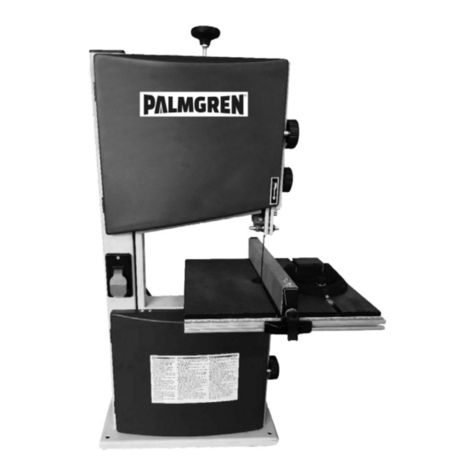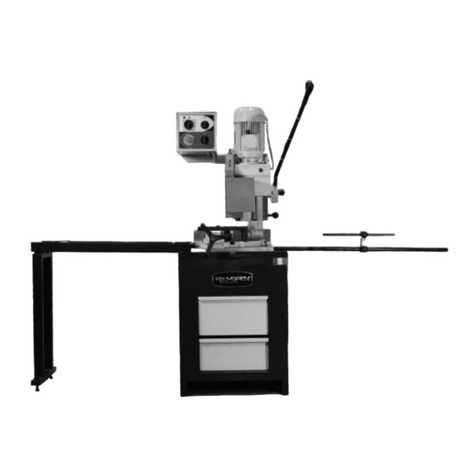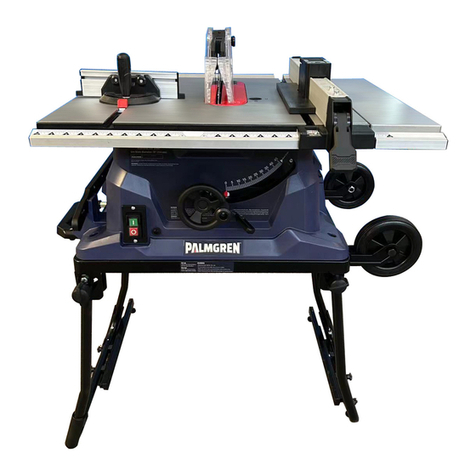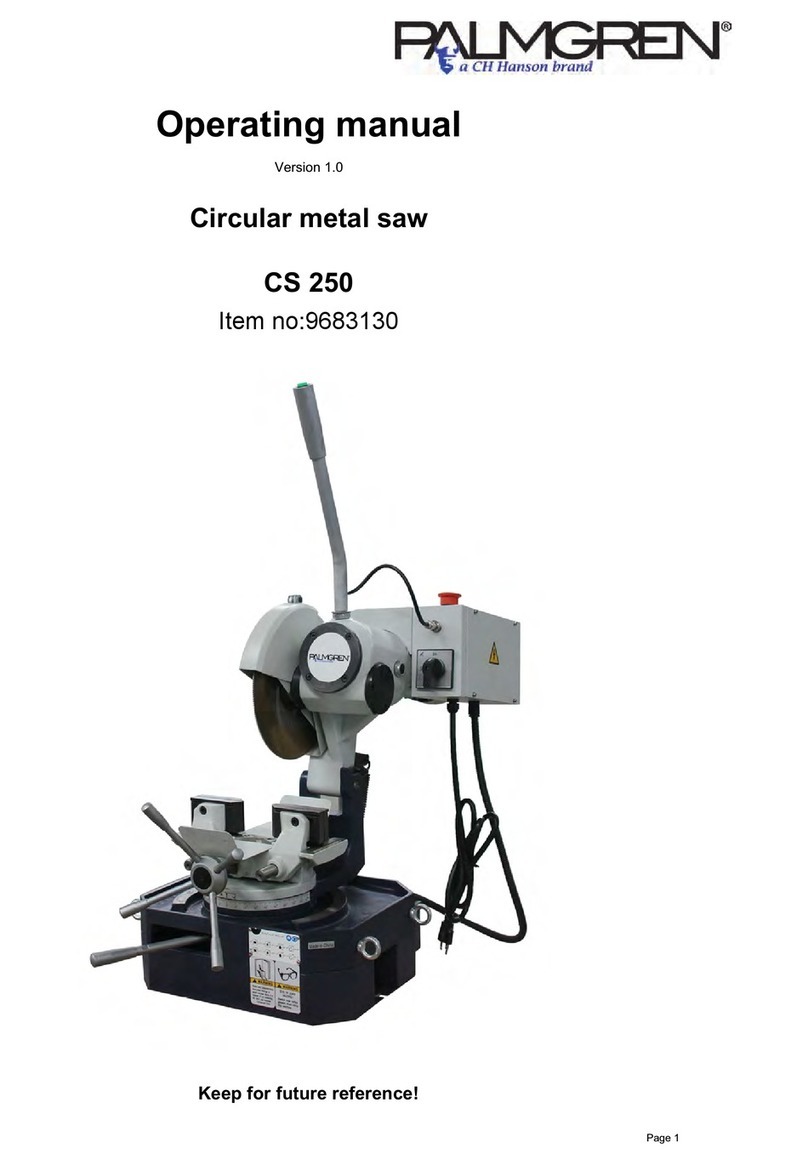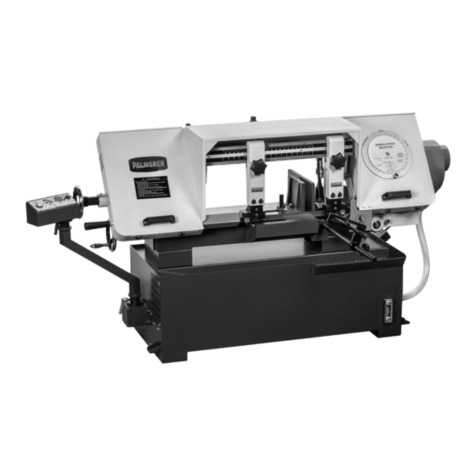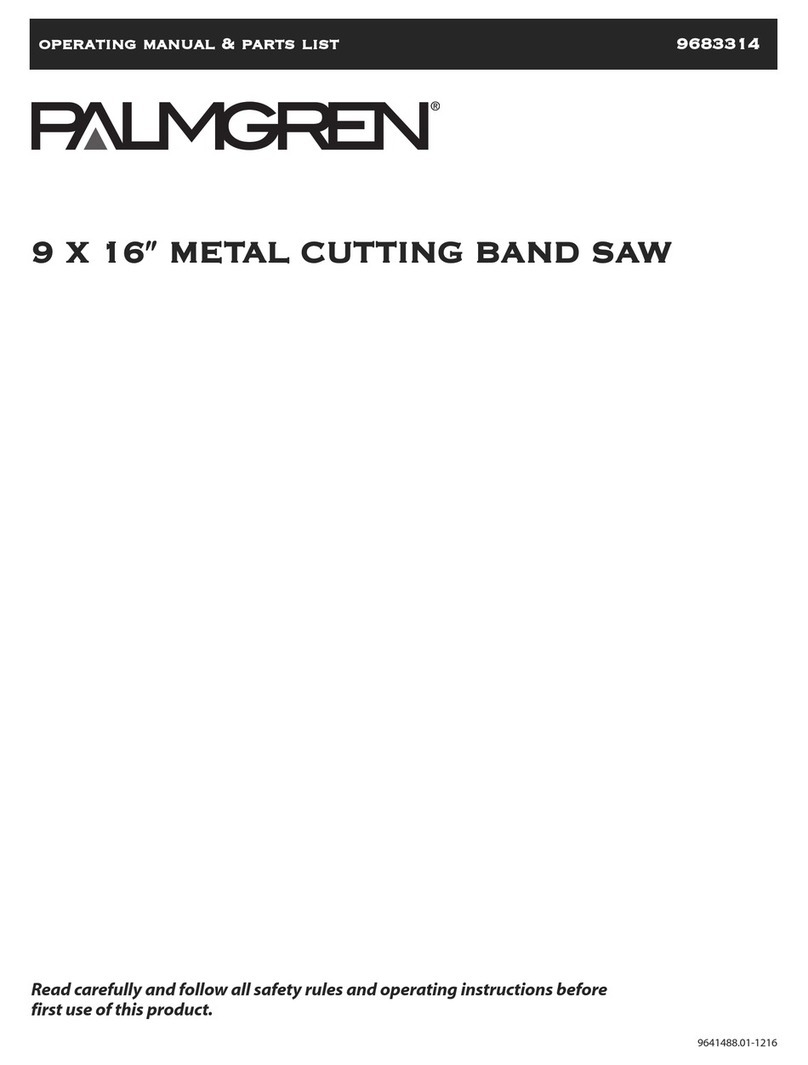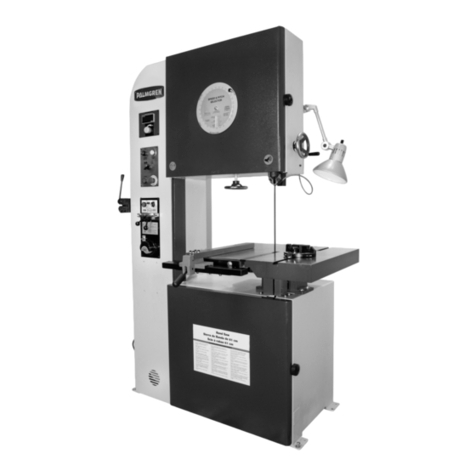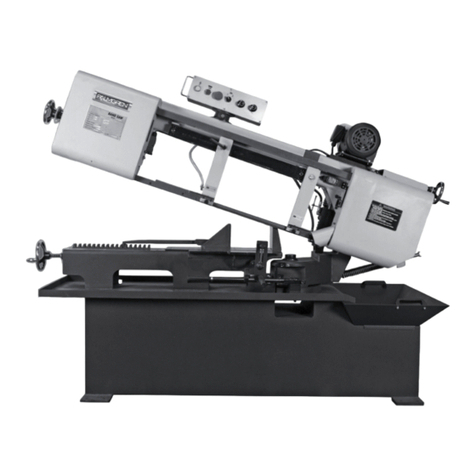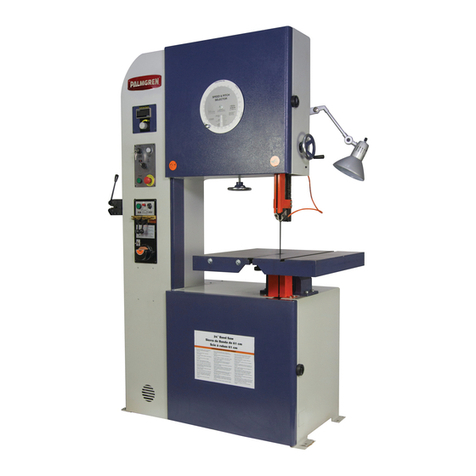
3
SAFETY RULES (CO TI UED)
•Be alert and think clearly. Never operate power tools when
tired, intoxicated or when taking medications that cause
drowsiness.
PREPARE WORK AREA FOR JOB
•Keep work area clean. Cluttered work areas invite accidents.
•Do not use power tools in dangerous environments. Do not use
power tools in damp or wet locations. Do not expose power
tools to rain.
•Work area should be properly lighted.
•Proper electrical outlet should be available for tool.
Three-prong plug should be plugged directly into properly
grounded, three-prong receptacle.
•Extension cords should have a grounding prong, and the three
wires of the extension cord should be of the correct gauge.
•Keep visitors at a safe distance from work area.
•Keep children out of workplace. Make workshop childproof. Use
padlocks, master switches or remove switch keys to prevent
any unintentional use of power tools.
TOOL SHOULD BE MAI TAI ED
•Always unplug tool prior to inspection.
•Consult manual for specific maintaining and adjusting
procedures.
•Keep tool lubricated and clean for safest operation.
•Remove adjusting tools. Form the habit of checking to see that
adjusting tools are removed before switching machine on.
•Keep all parts in working order. Check to determine that the
guard or other parts will operate properly and perform their
intended function.
•Check for damaged parts. Check for alignment of moving parts,
binding, breakage, mounting and any other condition that may
affect a tool’s operation.
•Damaged parts should be properly repaired or replaced. Do not
perform makeshift repairs. (Use the parts list provided to order
replacement parts.)
K OW HOW TO USE TOOL
•Use the right tool for the job. Do not force tool or attachment
to do a job for which it was not designed.
•Disconnect tool when changing blade.
•Avoid accidental start-up. Make sure that the tool is in OFF
position before plugging in.
•Do not force tool. It will work most efficiently at the rate for
which it was designed.
•Keep hands away from moving parts and cutting surfaces.
•Never leave a tool running unattended. Turn the power off and
do not leave tool until it comes to a complete stop.
•Do not overreach. Keep proper footing and balance.
•Never stand on tool. Serious injury could occur if tool is tipped
or if cutter is unintentionally contacted.
•Know your tool. Learn its operation, application and specific
limitations.
•Use recommended accessories (Refer to page 13). Use of
improper accessories may cause risk of injury to persons.
•Handle workpiece correctly. Protect hands from possible injury.
•Turn the machine off if it jams. Blade jams when it digs too
deeply into the workpiece. (The motor force keeps it stuck in
workpiece). Do not remove jammed or cut off pieces until the
saw is turned off, unplugged and the blade has stopped.
WAR I G: The operation of any power tool can result in foreign
objects being thrown into the eyes, which can result in severe eye
damage. Always wear safety goggles complying with United States
ANSI Z87.1 before commencing power tool operation.
ASSEMBLY
Refer to Figures 2 and 6-11 (pages 4, 7 and 10-18).
CAUTIO : Do not attempt assembly if parts are missing. Use
operator’s manual to order replacement parts.
I STALL METAL CUTTI G BLADE
Refer to Figures 2, 8 and 9.
•Make sure blade teeth are pointing down towards table. Turn
blade inside out if necessary.
•Rotate handwheel (Figure 8, Ref. No. 23) counterclockwise to
move blade wheels towards each other.
•Loosen handle (Figure 9, Ref. No. 30). Rotate handwheel (Figure
9, Ref. No. 22) to lower upper blade guide assembly as low as
possible.
•Loosen three screws (Figure 9, Ref. No. 5). Remove blade guards
(Figure 9, Ref. Nos. 4 and 38).
•Slip blade over upper and lower blade wheels, and center blade
on blade wheels. Slide blade in between blade guides.
•Rotate handwheel clockwise to tension blade.
•Replace blade guards and secure in place by tightening screws.
Raise upper blade guide assembly.
•Position clutch handle (Figure 8, Ref. No. 62) to “Metal”. See
Figure 2.
OTE: The blade must be tensioned and tracked, and the blade
guides must be adjusted before operation of the saw. Refer to
“Tensioning Blade”, “Tracking Blade” and “Blade uides” in the
OPERATION section, page 6.
I STALL WOOD CUTTI G BLADE
Refer to figures 2, 7, 8, 9 and 11 (pages 4, 10, 12, 14 and 18).
•The V-belt (Figure 11, Ref. No. 44) must be installed first when
using the saw to cut wood.
•Loosen knob (Figure 7, Ref. No. 14). Place V-belt on motor and
drive pulleys (Figure 8, Ref. Nos. 46 and 50).
•Tension V-belt by pushing down on motor mount plate and
tightening knob. Belt is properly tensioned when light pressure
applied to midpoint of the belt produces about 1/2” deflection.
•Make sure blade teeth are pointing down towards table. Turn
blade inside out if necessary.
•Rotate handwheel (Figure 8, Ref. No. 23) counterclockwise to
move blade wheels towards each other.
•Loosen handle (Figure 9, Ref. No. 30). Rotate handwheel (Figure
9, Ref. No. 22) to lower upper blade guide assembly as low as
possible.
•Loosen three screws (Figure 9, Ref. No. 5). Remove blade guards
(Figure 9, Ref. Nos. 4 and 38).
•Slip blade over upper and lower blade wheels, and center blade
on blade wheels. Slide blade in between blade guides.
•Replace blade guards and secure in place by tightening
screws. Raise upper blade guide assembly.
•Rotate handwheel clockwise to tension blade.
•Position clutch handle (Figure 8, Ref. No. 62) to “Wood”. See
Figure 2, page 4.
OTE: The blade must be tensioned and tracked, and the blade
guides must be adjusted before operation of the saw. Refer to
“Tensioning Blade”, “Tracking Blade” and “Blade uides” in the
OPERATION section, page 6.
Palmgren Operating Manual & Parts List 83115
